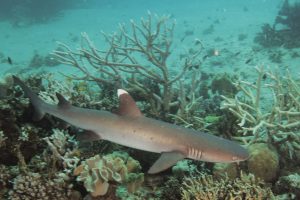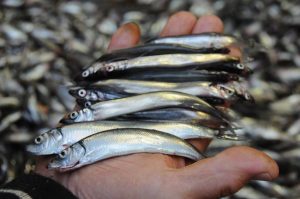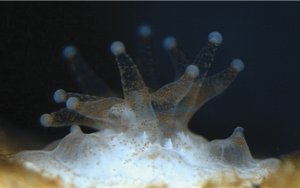ESA Tipsheet for January 31, 2019
Upcoming research in Frontiers in Ecology and the Environment
Wednesday, 30 Jan 2019
For Immediate Release
Contact: Zoe Gentes, 202-833-8773 ext. 211, gro.asenull@setnegz
Get a sneak peek into these new scientific papers, publishing on January 31, 2019 in the Ecological Society of America’s journal Frontiers in Ecology and the Environment.
- Parks for sharks are most successful when humans aren’t around
- Fisheries management efforts are responsible for recovering fish populations in the Northeast Atlantic
- Building best management practices for drinking water and air quality
- Coral reefs can benefit from probiotics, too
- Why it’s harder to manage parakeets than zebra mussels
Banning fishing isn’t enough for sharks on the Great Barrier Reef
On the Great Barrier Reef of Australia, sharks often receive priority status in conservation programs, but their populations have still declined across much of the region. Over the past forty years, a number of marine reserves (“parks”) have been established to protect sharks from being fished, and a few restrict human entry entirely. Researchers from the Great Barrier Reef Marine Park Authority and from the University of Tasmania compared different types of reserves encompassing a range of ages to determine the conditions that are most conducive to shark population recovery. Even though it is illegal to kill sharks in all of the reserves they studied, the researchers found that shark populations improved significantly more when all human entry was prohibited, suggesting that illegal extractive activities in the less stringent “no-take” reserves, where it is easier to get away with fishing, may be responsible for the projected disparity in shark recovery.
Author Contact: Ashley Frisch (ua.vog.apmrbgnull@hcsirf.yelhsa)
- Frisch A and Rizzari JR. Parks for sharks: human exclusion areas outperform no-take marine reserves. Frontiers in Ecology and the Environment. DOI: 10.1002/fee.2003
Regulation – not natural change – is responsible for improving Northeast Atlantic fish populations
Overfishing isn’t the only thing that is harmful to fish, so when dwindling fish populations do recover, it can be difficult to determine whether the improvements are due to tougher regulations on fishing, or if the populations simply bounced back because of environmental changes and natural fluctuations. A study of fishing areas across the Northeast Atlantic examined fishing reports, along with biomass and survival data, back to 1960 to determine whether the recent recovery of fish stocks in this area can actually be attributed to stricter regulations. The researchers found that reductions in fishing effort after the year 2000 were more strongly correlated with fish population recovery than natural changes in recruitment, and suggest that climate change-induced shifts in species distributions will amplify the need for science-based marine management strategies.
Author Contact: Fabian Zimmermann (on.ihnull@nnamremmiz.naibaF)
- Zimmermann F and Werner KM. 2019. Improved management is the main driver behind recovery of Northeast Atlantic fish stocks. Frontiers in Ecology and the Environment. DOI: 10.1002/fee.2002
Using people’s locations and preferences to help prioritize ecosystem services
Because resource managers have limited funds, they sometimes have to make tough decisions when it comes to conservation. In agricultural landscapes, best management practices, or “BMPs,” are used to conserve ecosystem services like drinking water, clean air, recreation, and crop production. But there are trade-offs associated with BMPs: one BMP that would benefit groundwater quality might be implemented at the expense of another that would otherwise boost crop yields. What’s more, decisions to select one BMP over another are often made without regard to the location and well-being of the people who rely on the services in question. Researchers from the University of Minnesota, the University of Vermont, and the Nature Conservancy compared how different BMPs would affect supplies of ecosystem services in a sub-basin of a watershed in eastern Iowa, by visualizing where those supplies were located in relation to the human users who most value them.
Author contact: Bonnie Keeler (ude.nmunull@releek)
- Keeler BL, Dalzell BJ, Gourevitch J, et al. 2019. Putting people on the map improves the prioritization of ecosystem services. Frontiers in Ecology and the Environment. DOI: 10.1002/fee.2004
A healthier “microbiome” might buy corals some time
The “gut microbiome” concept that is becoming increasingly popular in discussions of human health (e.g. fecal microbiota transplants or probiotic supplements) can also be applied for organisms that don’t have a “gut” at all: corals. When corals experience stress, they expel the nutrient-supplying microbes that give coral reefs their colorful palette – leading to mass “bleaching” of entire reefs. Inoculating corals with specially engineered microorganisms (e.g. those that are heat-resistant) may make it easier for coral reefs to adapt to changing ocean conditions. After reviewing the current body of literature on microbiome engineering in corals, a team of researchers from James Cook University and the Australian Institute of Marine Science identified the main research priorities that will be needed to push the field of study past the “proof of concept” stage. They suggest that while corals will be unlikely to thrive without substantial intervention in deteriorating ocean conditions, microbiome engineering may be a strategy that can at least buy corals some time.
Author Contact: Hannah Epstein (ua.ude.ucj.ymnull@nietspe.hannah)
- Epstein HE, Smith H, Torda G, and van Oppen MJH. Microbiome engineering: enhancing climate resilience in corals. Frontiers in Ecology and the Environment. DOI: 10.1002/fee.2001
Why charismatic introduced species are so difficult to manage
People tend to have a more favorable view of species that are large, do not crawl or squirm, are not oily or slimy, and are culturally valued. Some introduced species, like zebra mussels, tend to be reviled by the public, but others are more charismatic, and these imbalances in public perception of introduced species influence the way those species are managed. For example, the pet trade has led to an established population of parakeets in Europe far outside the species’ native range. Even though the parakeets can transmit diseases to native birds and are recognized as a crop pest, the public enjoys seeing them in local parks and gardens and is likely to oppose eradication efforts. A group of researchers from the US Geological Survey and several universities in the US and UK explored how public perception and management actions towards such charismatic introduced species are often at odds with the actual ecological characteristics of the introduced populations: Introduced parakeets tend to be released in cities, and have been around just long enough for the public to become accustomed to them, but the parakeets actually exact the most damage in rural areas, and because they have not yet become an ecological fixture in the surrounding landscape, they can in fact still be managed before they become a true nuisance. The researchers explore similar cases of introduced salmonid and free-roaming horses, and suggest ways to establish science-based strategies for managing introduced species while also maintaining public trust.
Author Contact: Erik Beever (vog.sgsunull@reveebe)
- Beever EA, Simberloff D, Crowley SL, et al. Social–ecological mismatches create conservation challenges in introduced species management. Frontiers in Ecology and the Environment. DOI: 10.1002/fee.2000
###
The Ecological Society of America, founded in 1915, is the world’s largest community of professional ecologists and a trusted source of ecological knowledge, committed to advancing the understanding of life on Earth. The 9,000 member Society publishes five journals and a membership bulletin and broadly shares ecological information through policy, media outreach, and education initiatives. The Society’s Annual Meeting attracts 4,000 attendees and features the most recent advances in ecological science. Visit the ESA website at https://www.esa.org.




